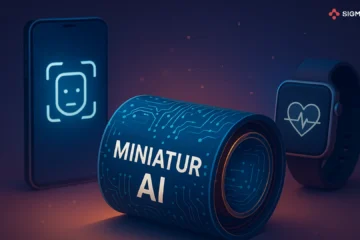In the rapidly evolving world of artificial intelligence, ChatGPT-5 stands out as a cutting-edge AI chatbot developed by OpenAI. Building on the capabilities of its predecessors, such as ChatGPT-3.5 and ChatGPT-4, this latest version demonstrates remarkable improvements in understanding and generating human-like language. Its enhanced intelligence and context-awareness allow it to engage in more meaningful, accurate, and nuanced conversations, making it a powerful tool for both everyday users and professionals.
ChatGPT-5: Release Date, Developers, and Development Reasons
Release Date:
OpenAI officially launched ChatGPT-5 on August 7, 2025. It is the latest flagship model, replacing previous versions like GPT-4o and GPT-4.5.
Developers:
ChatGPT-5 was developed by OpenAI, a leading AI research organization focused on advancing artificial intelligence safely and responsibly.
Supported Languages:
The model supports multiple languages, including English, Hindi, Spanish, French, German, Chinese, Japanese, and many more, allowing for a versatile global user experience.
Reasons for Development:
- Advancements in AI Capabilities:
ChatGPT-5 was designed to handle complex reasoning, multimodal inputs, and advanced personalization, making interactions more intelligent and versatile. - User Feedback and Expectations:
Features like adaptive response modes (“Fast,” “Thinking,” “Mini”) were added based on user feedback to allow more customized and natural conversations. - Competitive Market Dynamics:
OpenAI released GPT-5 to maintain its leadership in the AI industry, keeping pace with competitors like Anthropic’s Claude and Elon Musk’s xAI Grok.
Read Also: ChatGPT App Now Available on iOS in 11 Additional Countries
Features of ChatGPT-5
- Language Understanding: ChatGPT-5 can communicate in multiple languages and comprehend complex sentences, making interactions more natural and versatile.
- Advanced Reasoning: It is capable of solving logical and analytical problems, demonstrating higher-level thinking skills.
- Memory Feature: Some versions include a long-term memory option, allowing the AI to remember past interactions and provide more personalized responses.
- Multimodal Capability: Beyond text, it can understand images and voice inputs (if enabled), enabling richer and more interactive experiences.
- Personalization: The AI can tailor its responses according to the user’s style and preferences, creating a more customized and engaging conversation.
Use Cases of ChatGPT-5
- Education: ChatGPT-5 can assist students with homework, explain complex concepts, and provide learning support in an interactive way.
- Business: It helps businesses with customer support, automates responses, and generates content efficiently.
- Creative Writing: The AI can aid in writing stories, poems, scripts, and other creative content, offering inspiration and structure.
- Programming: It supports programmers by generating code snippets, debugging errors, and explaining programming concepts.
Advancements over Previous Versions
ChatGPT-5 offers significant improvements compared to its predecessors. It has enhanced context understanding, accuracy, and creativity, allowing it to generate more relevant and insightful responses. The response time is faster, and the occurrence of errors has been reduced. Moreover, its ability to perform complex reasoning and multi-step problem-solving has improved, making it more reliable for challenging tasks.
Limitations of ChatGPT-5
Despite its advanced capabilities, ChatGPT-5 has certain limitations. It may sometimes provide inaccurate or biased information, so users should verify critical facts. Its ability to fetch real-time data from the internet is limited and works only when connected to external sources. Additionally, privacy and data security must be carefully considered when sharing sensitive information.
Technology Behind ChatGPT-5
ChatGPT-5 is built on the transformer architecture, one of the most powerful deep learning techniques in artificial intelligence. It has been trained on billions of parameters, which enhances its knowledge base and reasoning capabilities. To understand context effectively, it utilizes a multi-layer attention mechanism, enabling it to follow and respond to complex conversations with accuracy and coherence.
Safety and Ethics
OpenAI has enhanced safety filters and content moderation in ChatGPT-5 to ensure responsible usage. The AI is designed to detect and avoid harmful, misleading, or sensitive content. There is a strong emphasis on the ethical use of AI, including safeguarding data privacy and providing unbiased responses, promoting a secure and trustworthy interaction environment.
Integration and APIs
ChatGPT-5 can be integrated into apps, websites, and business tools to enhance functionality and user interaction. Through the OpenAI API, developers can easily incorporate AI features into their products. This enables the creation of custom solutions, such as chatbots, content generation tools, and personal assistants, tailored to specific business or user needs.
Comparison with Previous Versions
Read Also: Grok AI vs ChatGPT vs Claude vs Gemini: Which AI Assistant Wins in 2025?
ChatGPT-5 demonstrates clear advancements over its predecessors in multiple areas:
| Feature | ChatGPT-3.5 | ChatGPT-4 | ChatGPT-5 |
|---|---|---|---|
| Context Understanding | Medium | High | Very High |
| Reasoning Ability | Medium | High | Advanced |
| Creativity & Writing | Good | Better | Excellent |
| Multimodal Input Support | No | Limited | Yes |
| Personalization | No | Partial | Advanced |
These improvements make ChatGPT-5 more intelligent, versatile, and user-friendly, capable of handling complex tasks and providing a more tailored conversational experience.
User Experience Enhancements
ChatGPT-5 offers several improvements to enhance the user experience. It can maintain interactive conversations over multiple turns, making dialogues more natural and engaging. The AI provides adaptive responses, adjusting its tone and style to match the user’s preferences. Additionally, it delivers faster and more accurate replies, with lower latency and higher correctness compared to previous versions, ensuring smoother and more satisfying interactions.
Read Also: Understanding Large Language Models (LLMs): The Brains Behind Modern AI
Future Possibilities
The future applications of ChatGPT-5 and similar AI technologies are vast. In education, AI tutors and mentors could assist students at all levels, providing personalized guidance and support. In healthcare, AI assistants may help with diagnosis and patient interactions, improving efficiency and patient care. In daily life, personal AI assistants could aid in reminders, planning, and decision-making, making everyday tasks easier and more organized.
FAQs
What is ChatGPT-5?
ChatGPT-5 is the latest AI chatbot developed by OpenAI. It can understand and generate human-like language, perform complex reasoning, and support multimodal inputs like text, images, and voice.
When was ChatGPT-5 released?
ChatGPT-5 was officially launched on August 7, 2025.
Who developed ChatGPT-5?
It was developed by OpenAI, a leading AI research organization.
What languages does ChatGPT-5 support?
ChatGPT-5 supports multiple languages, including English, Hindi, Spanish, French, German, Chinese, Japanese, and many more.
What are the key features of ChatGPT-5?
Advanced language understanding
Complex reasoning and problem-solving
Long-term memory (in some versions)
Multimodal input support (text, images, voice)
Personalized responses
How is ChatGPT-5 different from previous versions?
It offers better context understanding, faster response time, more creativity, advanced reasoning, multimodal input support, and improved personalization compared to GPT-3.5 and GPT-4.
Can ChatGPT-5 be used for business?
Yes, it can assist in customer support, content generation, chatbots, and other business applications.
Is ChatGPT-5 safe to use?
OpenAI has implemented safety filters and content moderation to prevent harmful or misleading responses, but users should still verify critical information.
Can ChatGPT-5 access real-time internet data?
Its real-time data access is limited and works only when connected to external sources.
How can developers integrate ChatGPT-5?
Developers can use the OpenAI API to integrate ChatGPT-5 into apps, websites, or custom business tools.


